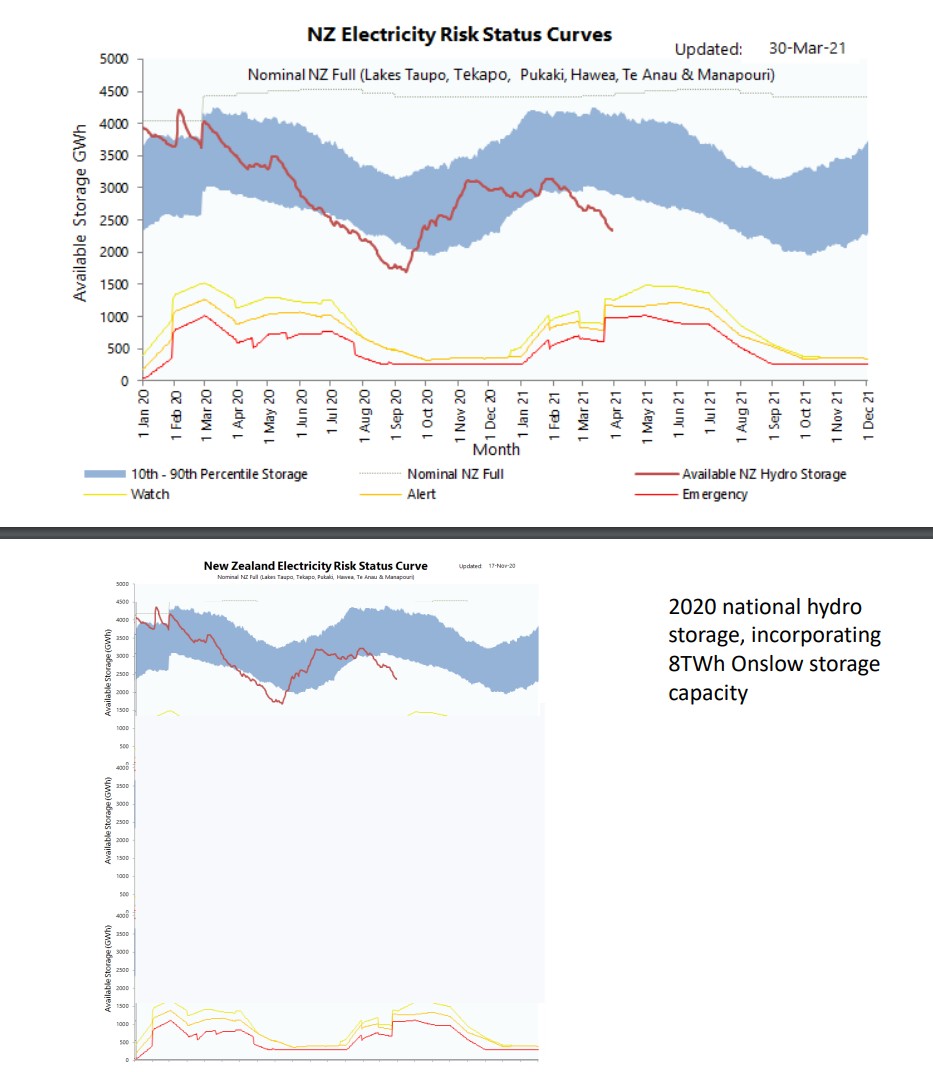djtOtago:
I haven't seen any proposals to use solar to refill lake Onslow. Only the uses of excess energy from current energy sources when demand is low.
Which I read as, our current hydro lakes when there is plenty of water and not a lot of demand.
Maybe i need to do some more reading but every other pumped hydro scheme uses cheap electricity to recharge and then sells during a peak when they can sell it at a higher price.
Buy Low, Sell high - at least 20% higher to offset the inefficiencies.
Although in other parts of the world like the UK, they are using constant base loads like nuclear as a source of cheap off-peak supply for recharging.
Any other hydro scheme that wanted to spill water could indeed offer to generate at a super cheap price which the "OnslowCo" could then buy - effectively transferring the water energy via the electricity grid.
Rather than spilling the water down the spillway they would just spill it via their turbines.
The same system could be used to buy excess solar and wind energy for uphill pumping.
Edit: This of course does require water to be available coming down the clutha river for pumping up to lake onslow. I dont know much about the geography of the clutha river but I would hope a small lake is created at the bottom for daily cycling up/down hill while the river in general provides long term filling.


